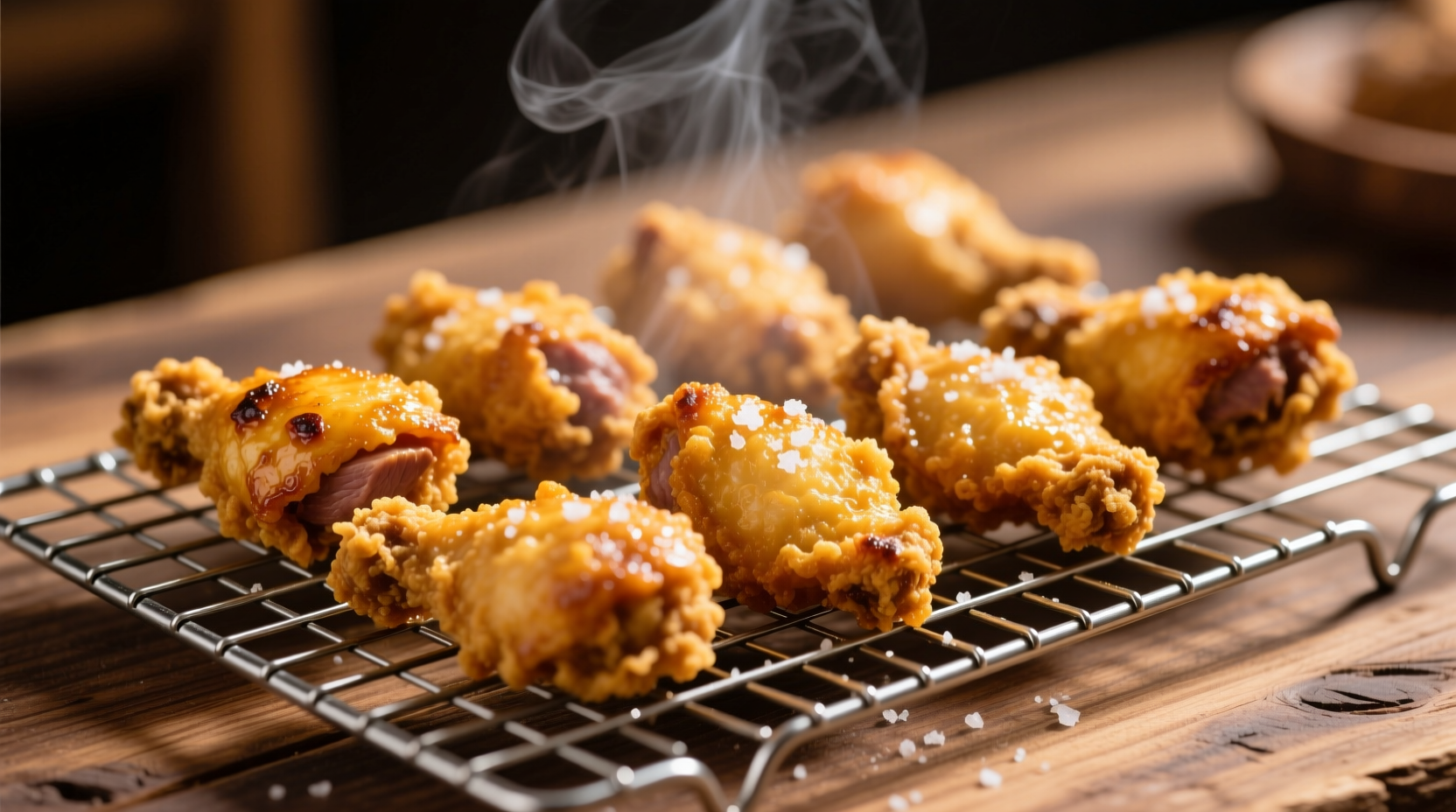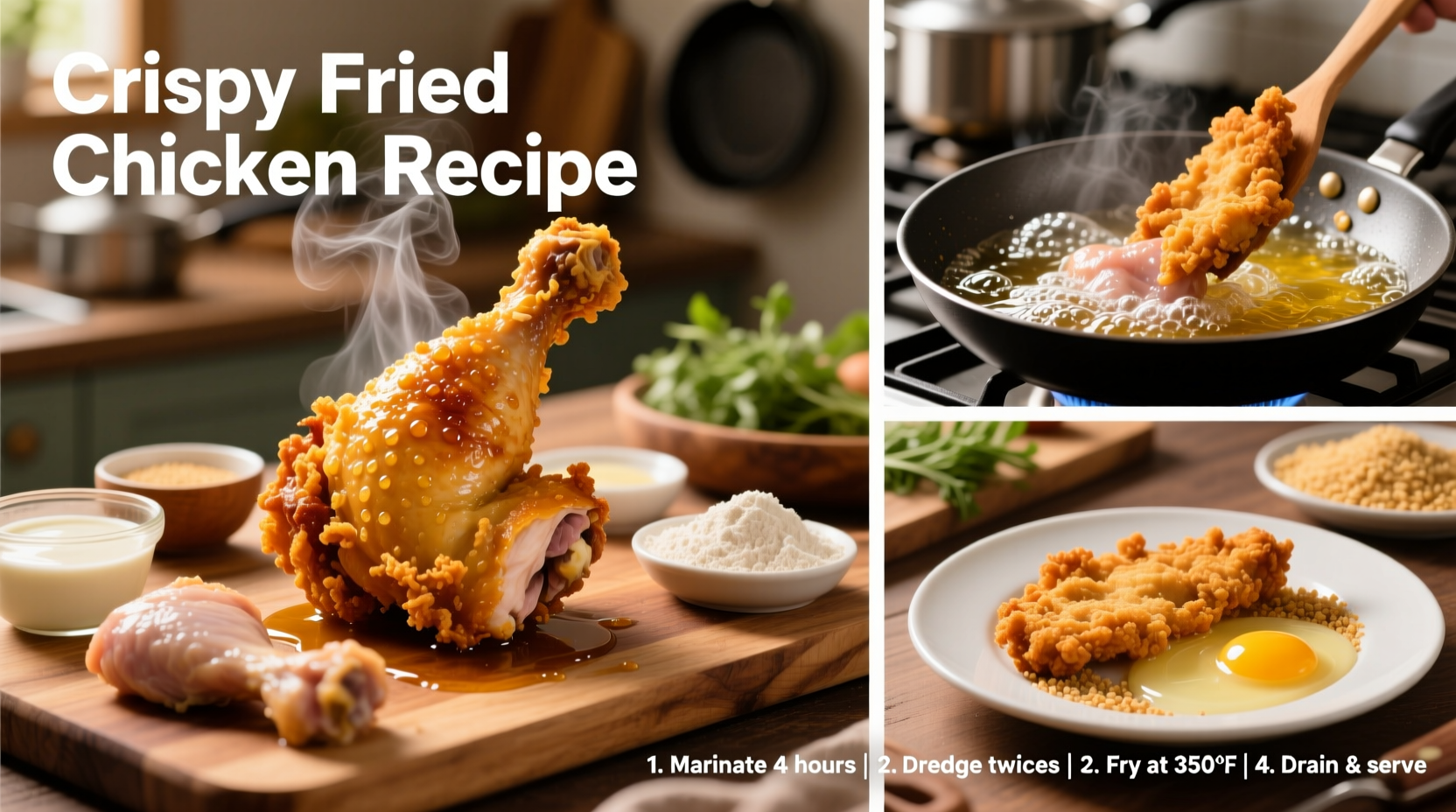Nothing compares to the satisfying crunch of perfectly fried chicken that stays crispy until the last bite. After years of testing techniques in professional kitchens and home settings, I've identified the exact science-backed methods that guarantee restaurant-quality results. Forget soggy coatings and uneven cooking - these proven steps address the two critical challenges home cooks face: moisture management and oil temperature control.
The Critical Preparation Phase: Where Most Fail
Professional kitchens achieve consistent crispiness through meticulous preparation, not just frying technique. The key is managing moisture at every stage:
- Buttermilk marinade with baking powder (1 tbsp per cup) creates microscopic bubbles that expand during frying, forming a lacy, crisp crust
- Minimum 4-hour soak allows buttermilk's lactic acid to tenderize while the baking powder begins reacting with moisture
- Double-dredging technique - dip, dredge, dip again, then dredge - creates layered protection against moisture
- Resting period of 15 minutes after final dredge lets coating hydrate properly for optimal adhesion
"The difference between good and great fried chicken happens before the chicken ever touches hot oil," explains Antonio Rodriguez, who refined these techniques during his time at Michelin-starred establishments. "Most home cooks skip the resting step, causing coating to slough off in the oil."

Frying Temperature Control: The Science of Crispiness
Maintaining precise oil temperature is non-negotiable for crispy results. Here's why:
| Oil Temperature | Result | Scientific Reason |
|---|---|---|
| Below 300°F | Soggy, greasy coating | Moisture doesn't evaporate quickly enough, oil penetrates coating |
| 325-350°F | Perfectly crisp, golden crust | Optimal Maillard reaction + moisture evaporation balance |
| Above 375°F | Burnt exterior, raw interior | Exterior browns before interior cooks through |
Use a heavy-bottomed Dutch oven for even heat distribution and a reliable candy thermometer. Adjust heat constantly to maintain 340°F - professional kitchens do this instinctively, but home cooks need vigilance. Fry in small batches to prevent temperature drops that cause sogginess.
Finishing Techniques for Lasting Crispiness
The work doesn't end when chicken leaves the oil. These professional finishing methods preserve crispiness:
- Wire rack resting - never plate directly! Elevate chicken on a wire rack over paper towels to prevent steam accumulation
- Strategic salting - wait 2 minutes after frying before seasoning to prevent salt from drawing moisture
- Proper spacing - keep pieces separated to avoid steam transfer between pieces
- Re-crisping method - for leftovers, use oven at 375°F for 8-10 minutes rather than microwave
Historically, Southern fried chicken evolved from Scottish frying techniques combined with West African seasoning traditions. The modern double-dredge method emerged in the early 20th century as cooks sought ways to maintain crispiness during transport - a challenge that still faces home cooks today when taking chicken from kitchen to table.
Troubleshooting Common Crispy Fried Chicken Problems
Even with proper technique, issues can arise. Here's how to fix them:
- Soggy coating: Oil temperature dropped too low - use smaller batches and maintain 340°F
- Coating falling off: Not enough resting time after final dredge - allow 15 minutes for proper adhesion
- Burnt exterior: Oil too hot or pieces too large - maintain 325-350°F and cut uniform pieces
- Greasy texture: Oil temperature too low or improper draining - use wire rack and maintain proper temperature
For optimal food safety, always ensure chicken reaches 165°F internal temperature as verified by a meat thermometer. The USDA Food Safety and Inspection Service confirms this is the minimum safe temperature for poultry to eliminate harmful bacteria (USDA FSIS).
Advanced Techniques for Next-Level Crispiness
Once you've mastered the basics, try these professional enhancements:
- Ice water brine before buttermilk soak creates additional moisture control
- Adding cornstarch (20% of flour mixture) increases crispiness through starch gelatinization
- Using peanut oil instead of vegetable oil provides higher smoke point and neutral flavor
- Finishing with smoked paprika in the final dredge adds depth without burning
Remember that humidity affects results - on rainy days, increase resting time after dredging by 5 minutes to compensate for atmospheric moisture. This contextual factor explains why the same recipe can yield different results depending on weather conditions.











 浙公网安备
33010002000092号
浙公网安备
33010002000092号 浙B2-20120091-4
浙B2-20120091-4